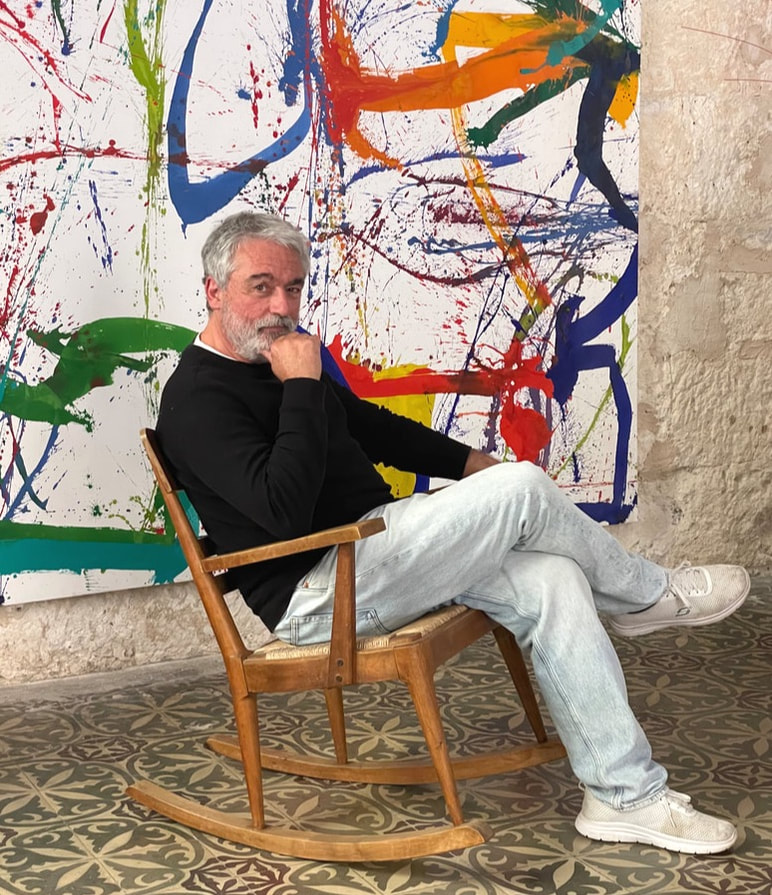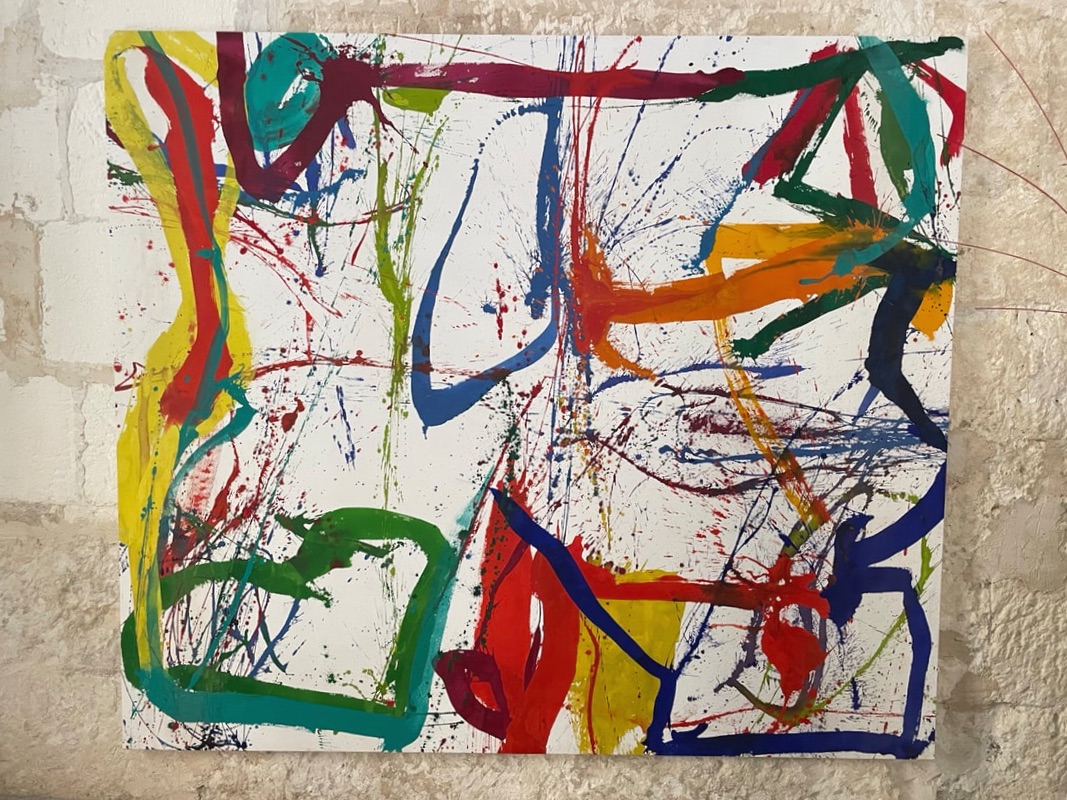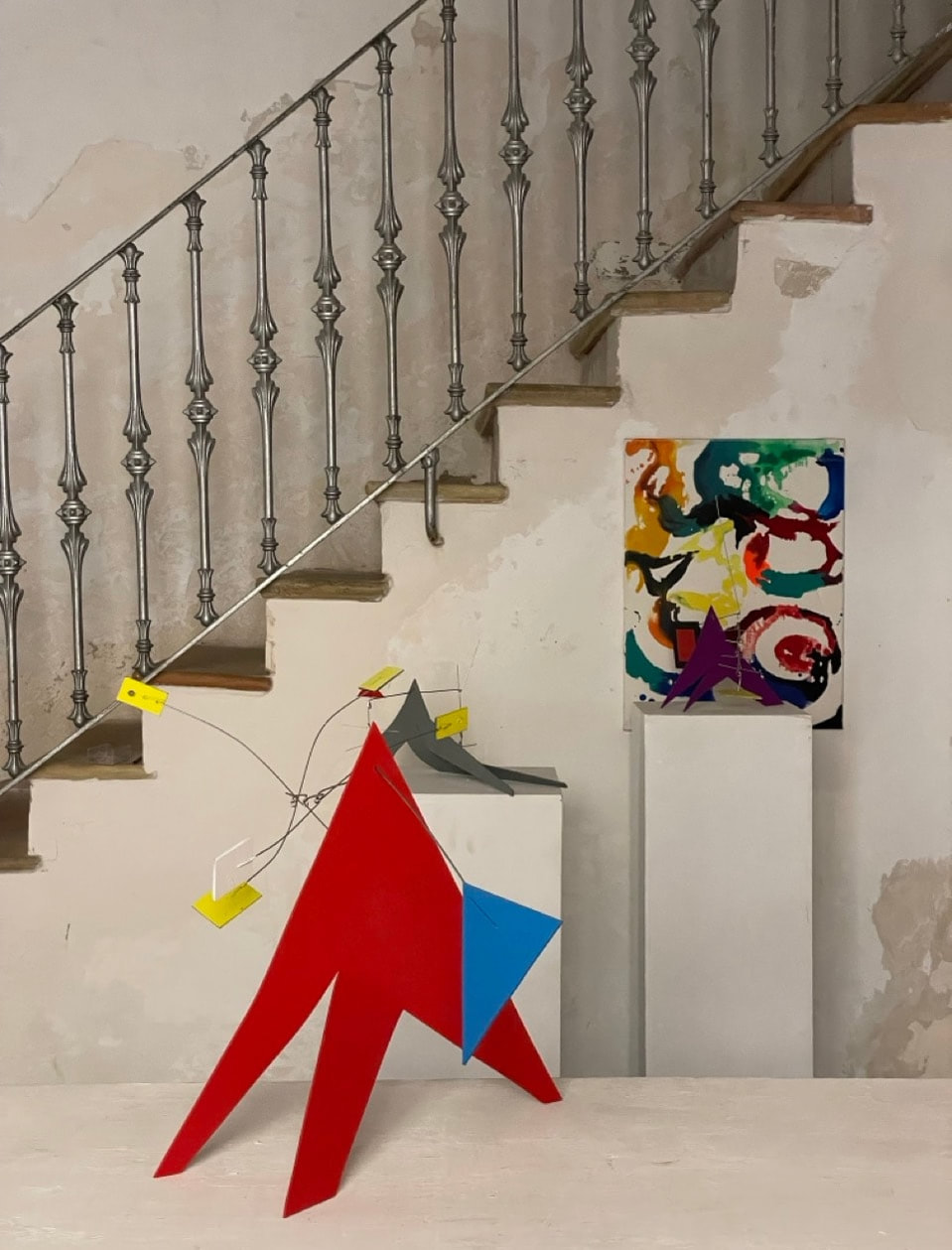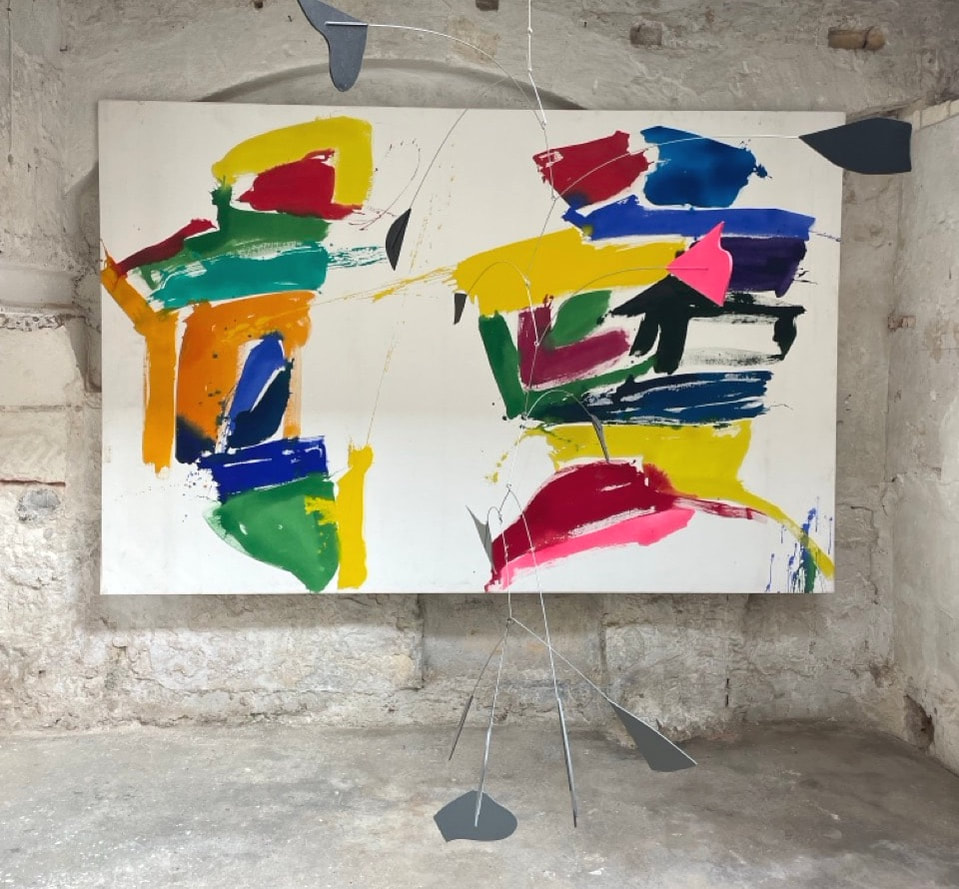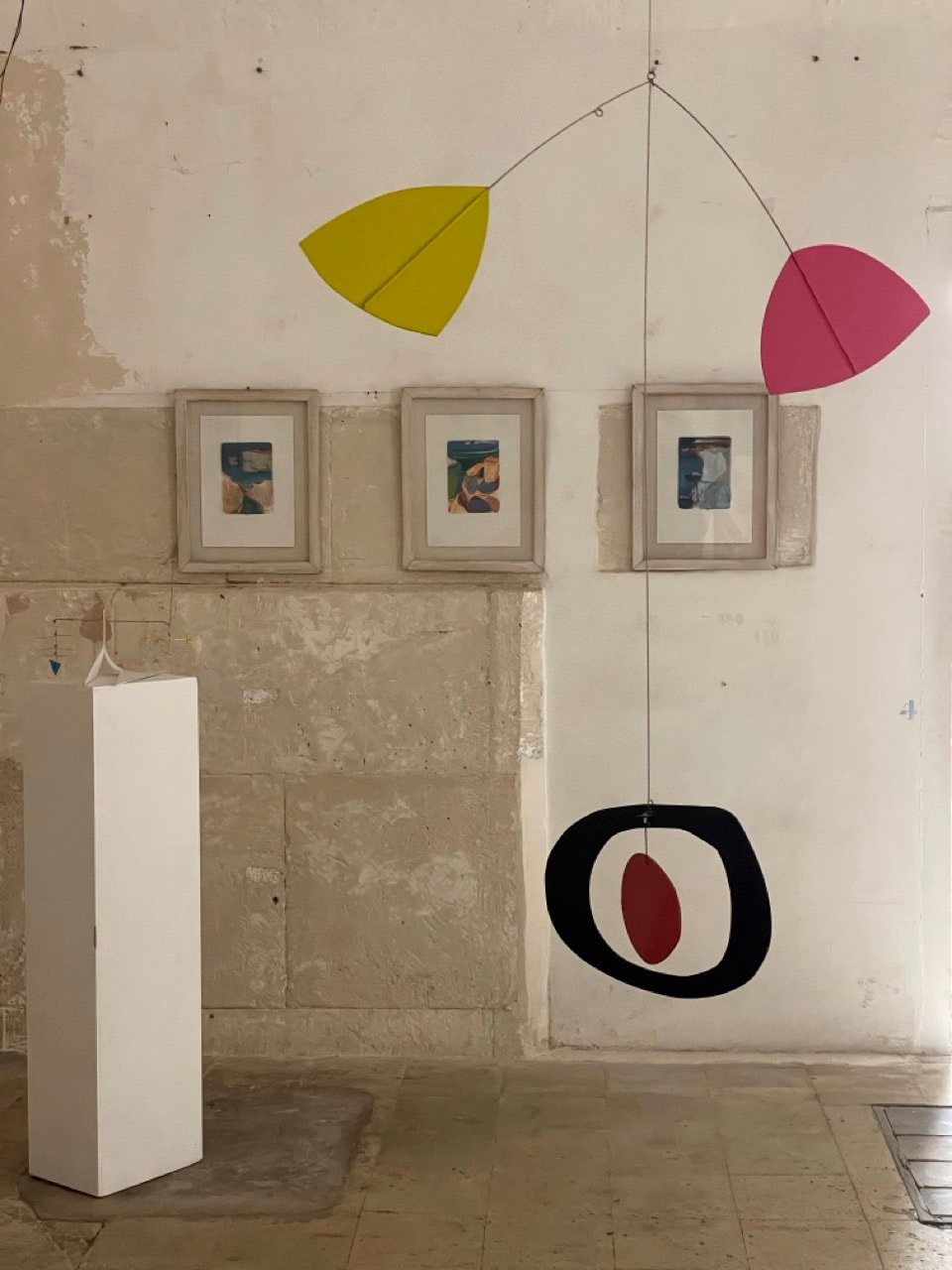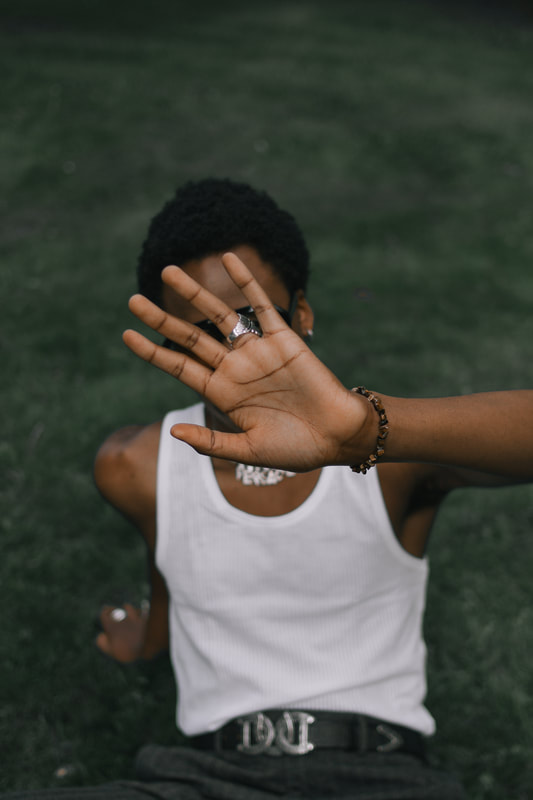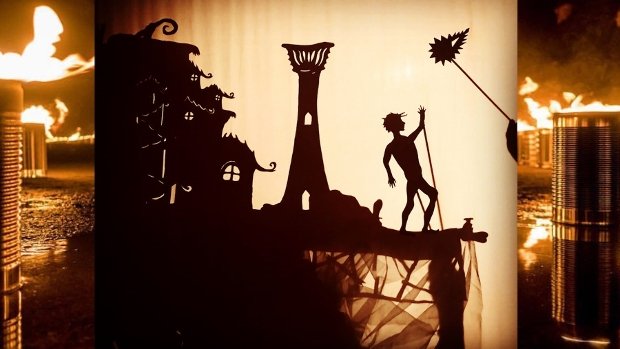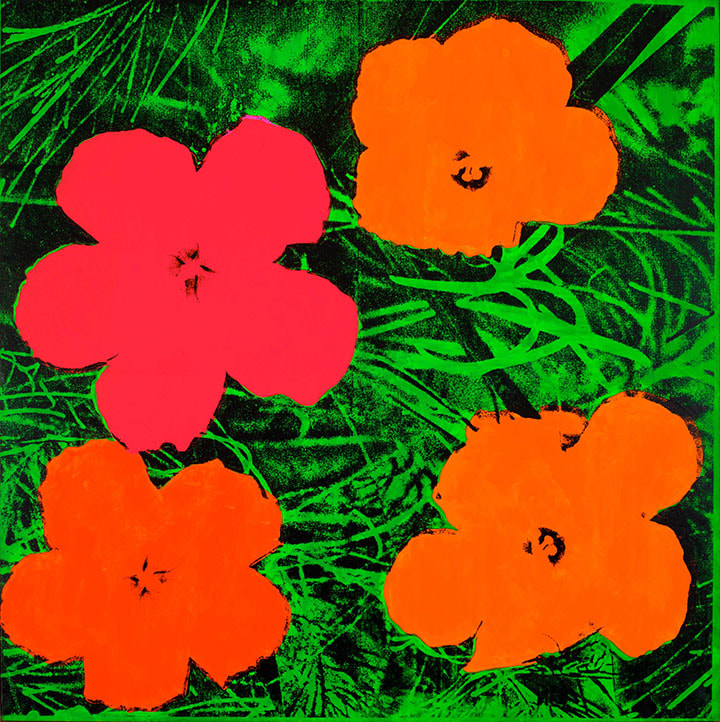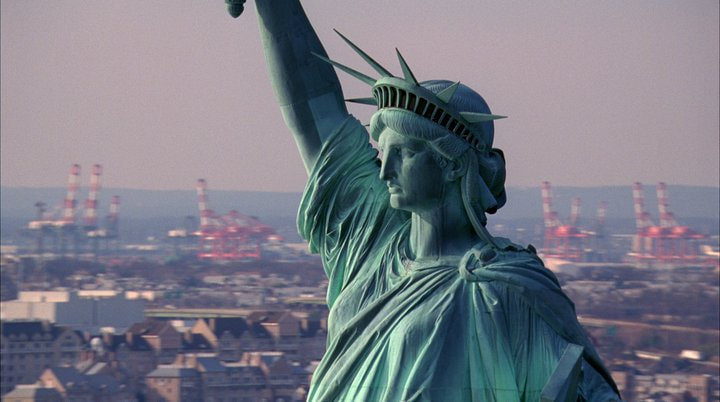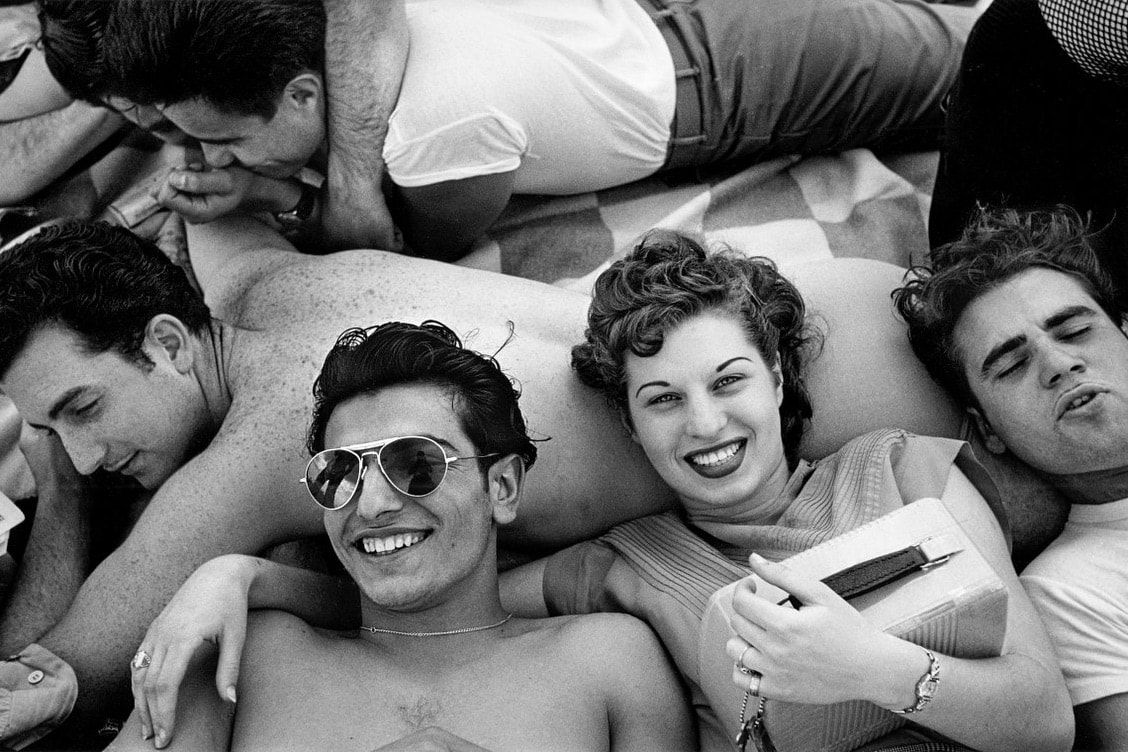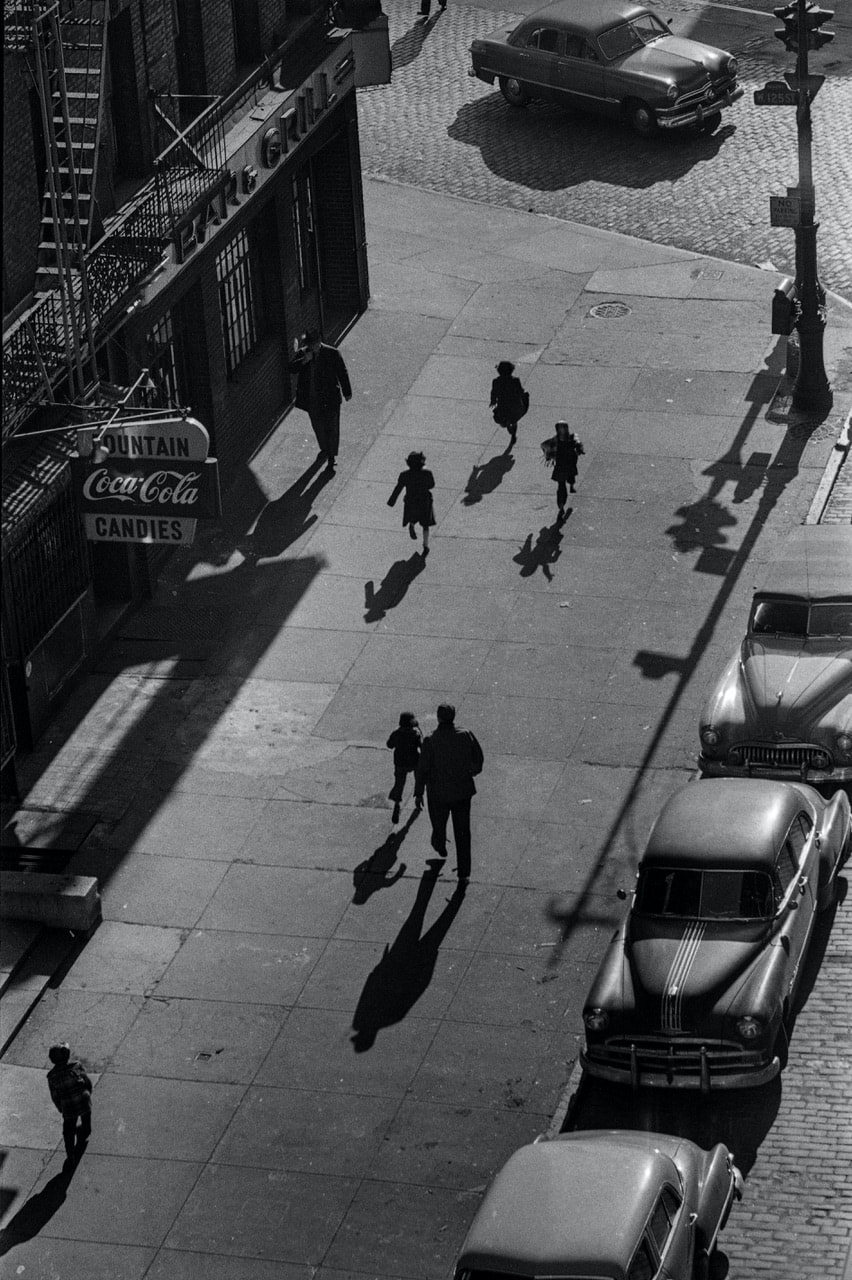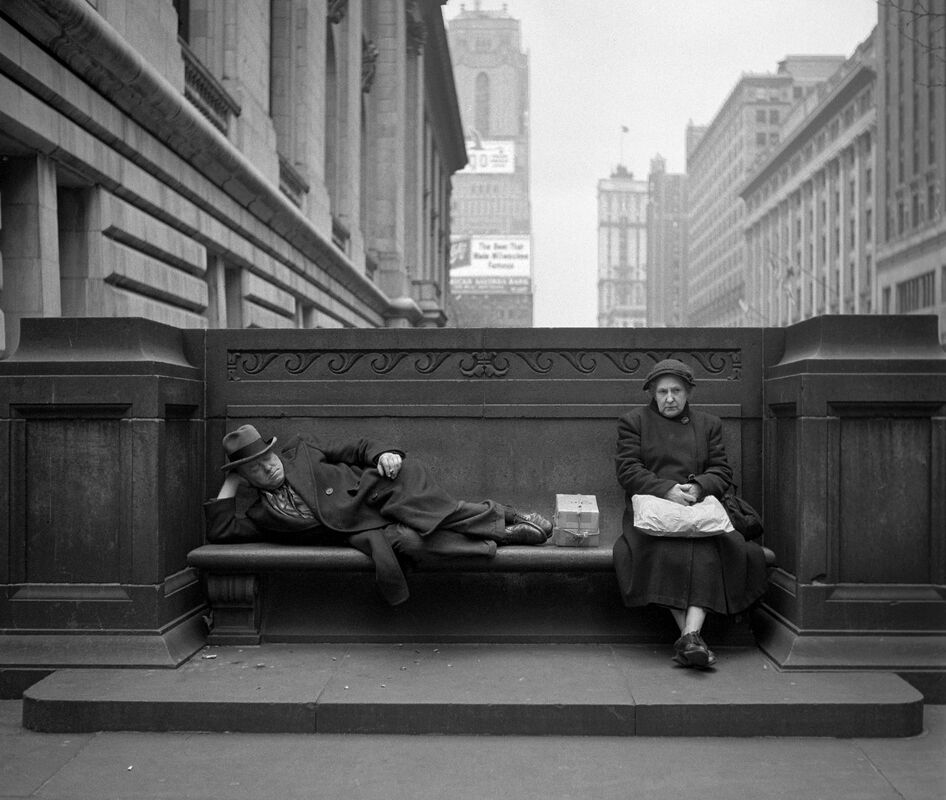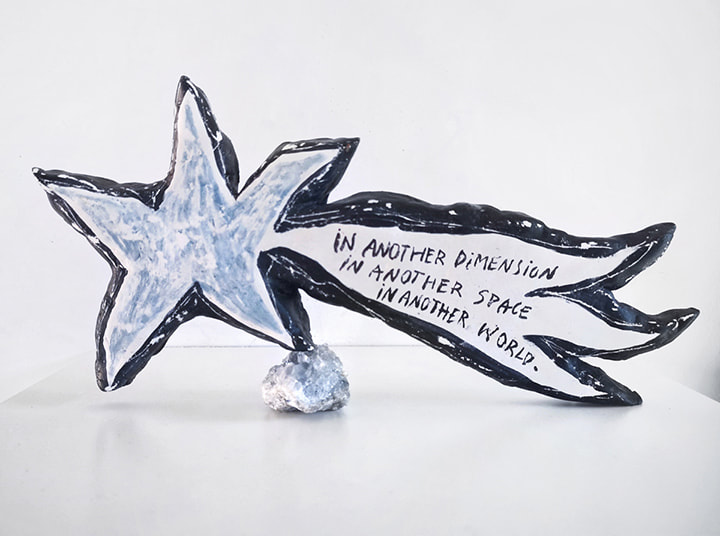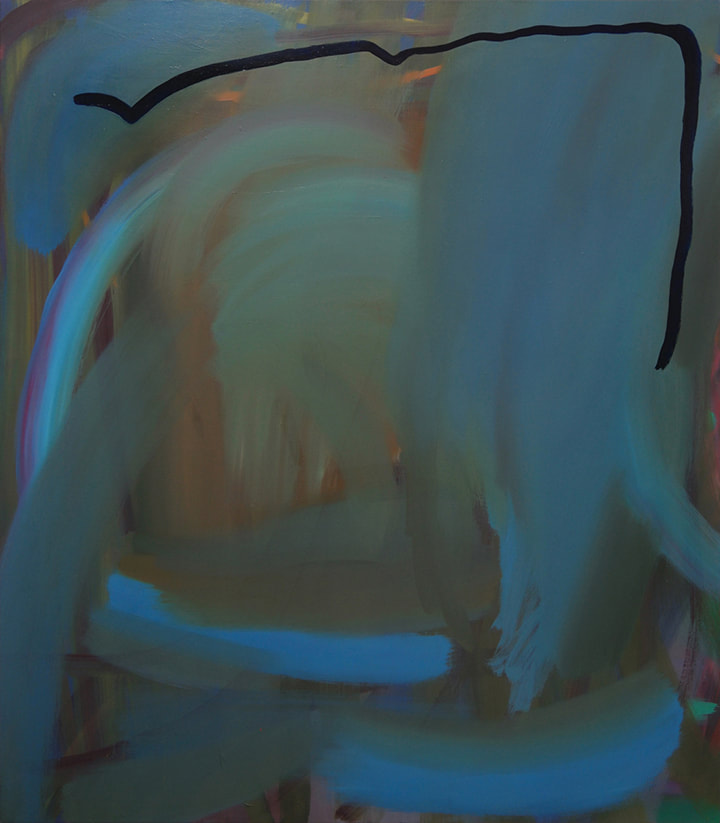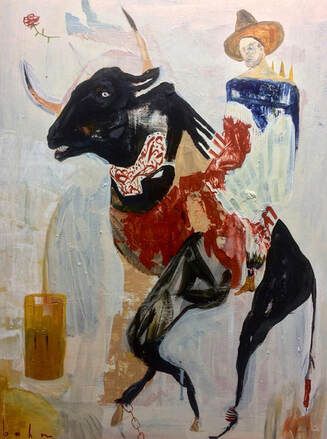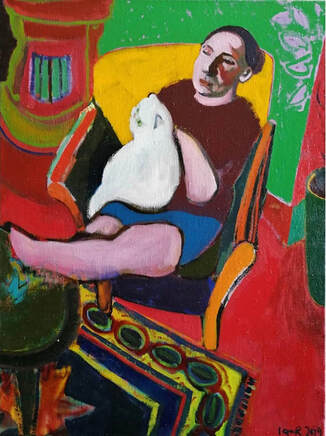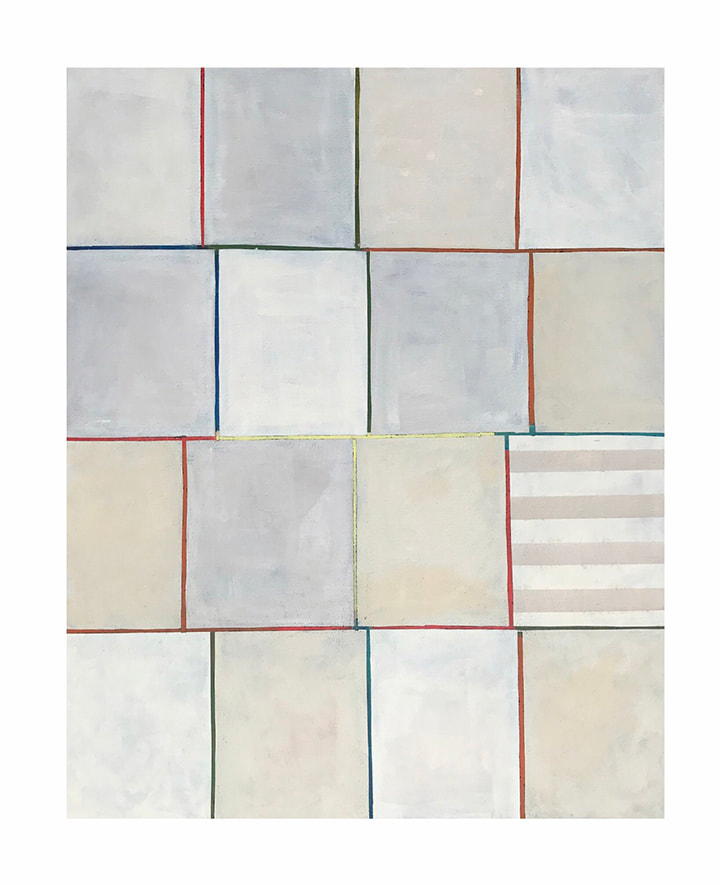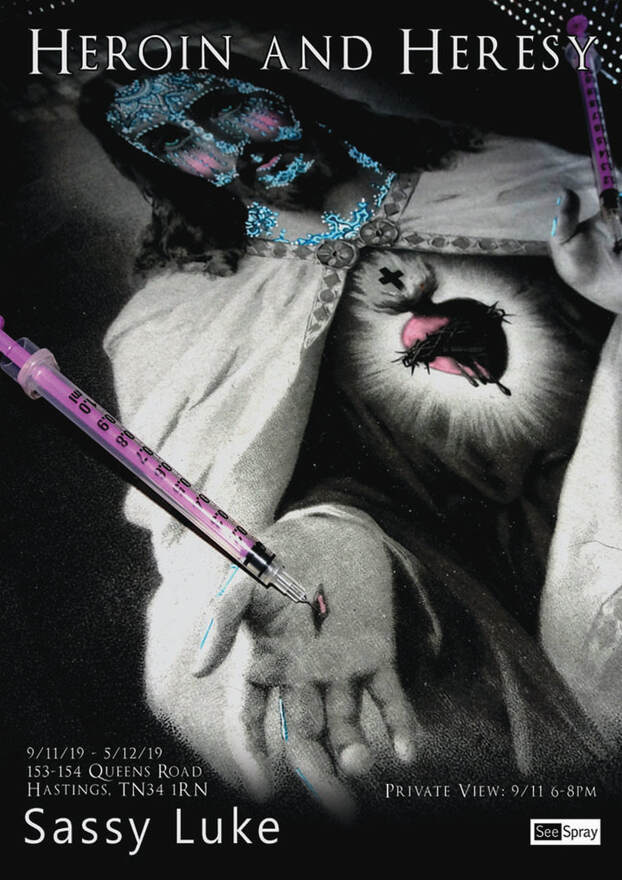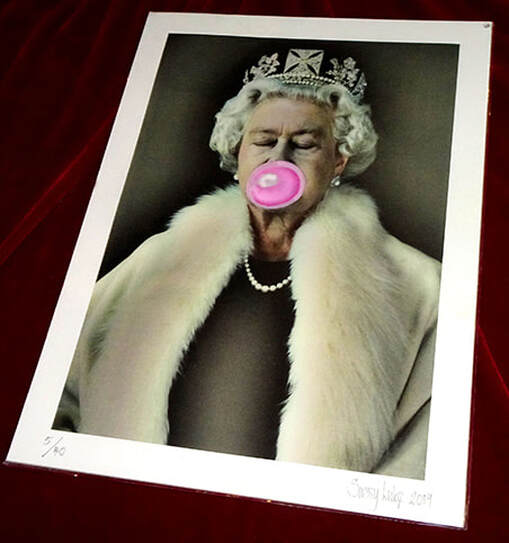|
Interview/Photography SøCreative Director: Chris Saint Sims Jaume Prohens Fiol is one of the founding figures of the Felanix Nite De L’Art festival, as well as a PUNK attitude within the arts, discarding the romantic excesses of modern hypnotic and typical Western success. If you visit Felanix during its Sunday market, its hard to miss Jaume holding court, either casually in his arts space, shaded from the light sat in his rocking char like an installation deep in thought, or at the bakery next door drinking coffee, surrounded by people and enthusiastically conversing on a philosophical level. Prohens is a character with an energy that’s simmering but steady. One of those creatives you are not quite sure where the conversation will go, and how far the energy will rise. In the shady streets of Felanix where the elegant traditional building sit, somewhat run down on the long winding and classical high street, Jaume Prohens arts space hides its self from the Mediterranean sun on the corner of 2 small roads. Here it observes unassumingly the passers by and those who venture in at the front door curiously. Both building and Jaume represent a simple life as a success in its self. This simplicity discovered reveals an allure of grandness in the lucidity. SoEdited visit Jaume one late morning to converse and delve into his existence. SO The Felanix Nite De L’Art is extremely popular, and for a very sleepy non tourist town it surprisingly has a huge popularity during its fiestas, when thousands of people come to party and explore the many pop-up art events and parties. It’s an enchanting place. JP The Felanix Art Nit is not an established event, it is more of a tradition, and one season it could just not happen. But since it first began in 2007 it has a growing popularity. Felanix has an avoidance of commerciality or commitment. The artists in this area exist without much but the love of art and simplicity of living, they don’t even need or want the public. People don’t need art, it is more a way to know people and communicate. But at the same time the Felanix community can be very reserved and laid back. SO The collaboration and the communication are an interesting aspect of art in Felanix that brings people together. Witnessing the art community in Felanix, it is not driven by financial gain, altho artists do need to generate a financial living, but they are not dictated buy it here. JP On making the decision that I do not belong to a commercial world, but of course I want to sell my painting up to a certain point. Selling art for me is not the most rewarding aspect of doing the work. I sell my works for actually not much, my life isn’t an excessive or expensive one. I can live with practically nothing, even with little food, and I have done in the past. That wasn’t a bad period of my life, it was an excellent training for life. Now I have removed the intermediate figure from my art, the galleries and those agents, I get to know the people between me and my works. Also not having to pay a middle man or deal in that corporate way. What that middle person wants is a bit of my freedom and commercialise me. What they see here is an expression of my freedom, and transforming it into a commercial product. It’s a symbolic freedom that the middle person does not have. SO Why did you come to the decision to shun a so called financially successful career in the arts that often relies on the involvement of galleries. JP There was a time I decide that I didn’t belong to the commercial side of art, and I wanted to commit an artistic and commercial suicide, which is a taboo in todays heavy financial and commercial world. I know that success exists, but I didn’t want to be a part of that type of success. I love to be at the mercy of whatever can come from one day to the next. I didn’t want to transform my life in to a business or enterprise. I renounced to have a commercial profit on my actual existence. SO Tell me about your gallery, its has a wonderful atmosphere to it, with the light falling through the windows, its high ceilings and an amber colour to the walls with the original typical Mallorcan tiled floor. JP it’s not a gallery It’s an open space. It’s a luxury space that I don’t actually have open most of the time, except 4 hrs a week. I open only during the Felanix market on a Sunday, and when people visit the market they can walk through the space, talk to me then disappear through the back door, and that’s ok. I don’t generally talk to them, but if they want to chat I’m here to have a conversation. The building itself is around 180 years old and is on the main street of Felanix, the classical town center. Originally the building was for olive oil production and storage. When my parents had the building it was then a shoe shop for 40 years. In 2007 I took the building over and it became the open space it is today, retaining much of the original features, its high ceiling and original grand staircase. You walk through the building from front to back, its open planned now with the doors removed but still retaining the rooms. SO What is you inspiration and what is behind your work. JP I did my first collection at 20, this was during the 1980s. I was living and studying at the ‘Facultat de Belles Arts’ University of Barcelona for 6 years, and then I remained in Barcelona for another 6 years. During that time of the 1980s it was a very expressive period. All my friends were poets, writers painters, this wild creativity was just in the air. It was a very bohemian period with many nationalities in Barcelona once the dictatorship collapsed. Spain had come out of a depression from this dictatorship that lasted over 30 years and ended in 1975. All of a sudden Spanish people were free to express how they wanted to be. Over time many of these liberated people fell away from an expressive life style and desired more financial success, security or things that were not purely creative. Originally my works were more figurative as I was inspired by Miguel Barcelo who is also from Felanix. A fantastic painter with a focus on earthly stuff, representative, figurative way of expressing. I followed this inspiration for quite some time and expressed my own creativity through this inspiration. But what you are looking at now, and how I paint now came from my divorce. I have had several experiences in life that brought me to a point where I wanted to carry on creatively, but I had to renounce knowing what I know and start completely from scratch. I metaphorically killed myself several times. And this killing of myself creatively, I renounced to paint nature anymore. This was also the time I stoped to separate my life from my creative work, and really merged them both together. At this moment of time I was also becoming a farther, and my approach to painting completely altered. I had someone who pushed me towards this new expression, my little son. Since his birth he has became my teacher, my maestro. And still now as a musician he inspires me so much. SO You dedicate your work to the abstract painting now, but also experiment with sculpture JP Yes my sculpture is a diversion from my abstract painting. My sculptures are a way of not having to hang items on the wall. My sculptures can be in the middle of the room and invade the space, rather than hanging on the walls of it. Abstract sculpture is fascinating to me and closer to architecture without having to have people inside or cater for them. My last sessions of sculpture were attempting to do something from the discarded and cut out items of carpenters wood. There are lots of carpenters in Mallorca and these shapes of discarded wood became interesting inspiration for me. I could do fascinating works from thrown away items, and reinvent them into abstract artistic sculptural pieces. These started small and I worked up to larger scale. It was very satisfying to sell several of these from the collection. SO It has now been a period of time since you picked up a paint brush or a piece of wood to create. So what actually have you been doing. JP In the meantime what have I done. Well I studied philosophy as I really wanted to know things. I had an accident 2 years ago, this I believe I was being told something, I kind of hit a wall and had to face life. Questions arrived: Whats wrong with me? Whats wrong with my relationships? What is love? What is God? Why is everybody so ugly in the street, it’s so unbearable! I had to know all these things that I hadn’t realised or questioned before. But there isn’t really a time scale for these questions, or answers. I have spent time discovering different philosophers over the past 2 years, and it has been rewarding, fascinating, enlightening and time consuming. SO Philosophy took you away from painting for the past 2 years, but you have told me a roll of canvas has recently arrived back in your life. Will philosophy be more precent now in your works, and on these new canvases? JP Well I am going to go larger with these new canvases! When I started abstract they were small works of 50/50. But the temptation to go big is enormous. Im also working at fasting the things I don’t like about myself, if I’m lucky! What I have found is that I allow myself to guide myself with intuition. But also one of my driving forces is boredom. Boredom is the best teacher for me. When boredom comes I go out and do something different. Or change the strategy and say “How do I get joy out of doing this”. Or change the medium, try doing something that I don’t know how to do. This is the way I find joy again, through boredom that takes me to intrigue and inspiration. Jaume Prohens Fiol Carrer Major 38 Felanitx. Mallorca Spain T - +34 643 846 481 Photography: Christopher Sims
0 Comments
THE BUMPKIN FILES
BY SARA DARLING Karis Beaumont has been named the winner of this year's Power Of Black Identity photo competition with a series of work called 'Bumpkin Files' which answered the brief to raise awareness of black life in Britain beyond the London-centric narrative, and showcase diversity. As well as winning £6,000 in camera equipment, she will have 1-2-1 sessions at the Nikon school and have her images displayed on billboards across central London courtesy of Jack agency. The winning shots will also be on display at "The Power Of" Festival which is coming to Lambeth Town Hall on June 12th and will celebrate the very best of Black British identity. Founder of diversity, equality and inclusion consultancy, The Fashion Minority Report, Daniel Peters adds "Beaumont’s work is such a worthy winner- she responded to the brief of what Black identity means for her in a creative and nuanced way.' Buy tickets for the Power of Festival here BY SARA DARLING
SPILLAGE AT THE BRIGHTON FRINGE Heading past the defunct bingo hall towards the (also) out of action Casablancas, I was intrigued as to where my adventures in theatreland were taking me on a freezing Autumn evening last week. The destination was a new one for me. The deceptively named Sweet Werks was tucked away on Middle Street, but there were no sweeties in sight! It was more of a communal workspace, with a bar, which gave me time to de-robe and grab a pre-show cuppa. The audience was then led downstairs to one of the photographic studios, for an original performance of 'SPILLAGE!' What unfolded was a hugely enjoyable one man show about anxiety, peer pressure and mental health - written and performed by UK Anti-Slam winner, Stewart Taylor; directed by Anna Carr. Putting it like that, it doesn’t sound like a barrel of laughs, but using spoken word, clowning and puppetry, Taylor’s energy and charisma were mesmerising in the intimate venue. Without a stage, props were minimal, which meant all eyes were on Taylor, along with his trusty action man aka ‘Anagram’ who is an unlikely confidante and decision maker, and is pretty good at inventing words too! The show will resonate with anyone- whether you are bogged down with a relentless 9-5 or not, and Dan plays the every-man who has lost the zest for life, Stuck in a job he hates at corporate enterprise, LAP Giles, with a demanding boss and ridiculous deadlines. The show opens as he is juggling phone calls, whilst preparing for a last minute presentation, when all he really wants is to have a coffee break. Trying to beat the system, he tempts fate by attempting to finish his drink, and in his panic, he spills it down his front- just before he was due to go and give his presentation, which he manipulates into a ‘spillage control workshop’. Using an elaborate over-analysis of the word ‘spillage’ as an analogy of his life, Dan switches between presenter mode where he educates and enlightens, to an inner monologue. With the outcome resulting in a finely tuned character study based on a profound reflection on his own identity in a touching, multilayered performance. Tackling everyday pressures and their consequences, the meaning of spilt coffee is put into perspective. ANYTIME THE WIND CAN CHANGE (BUT THANKFULLY IT STAYED CALM TONIGHT!)
BY SARA DARLING In typical Brighton fashion, the show must go on! And even though we didn’t have our annual jolly May Festival, with all the Fringe delights that come with it, many items on the agenda were re-scheduled for autumn. With ample venues offering suitable social distancing space, the Brighton Open Air Theatre (BOAT) is a fine example of how to host a performance- set in the charming amphitheatre setting in Dyke Road Park. And what a show I settled on for premier jaunt into the autumn agenda. Starting with a burst of the mesmerising Benjamin Yellowitz, performing an acoustic set as the sun set. Written and directed by Alex Podger, I was intrigued as to how a hand-crafted shadow puppet show would mesmerise adults. But ‘Anytime The Wind Can Change’ is based around a contemporary folktale about love and human kindness- with real-time narration and live music adding to the indulgence. The story revolves around Naut and Astrid- two giants who are living separate and lonely lives on opposite sides of an ocean with a community of ‘normal size’ people who although they accept the giants, are pretty set in their mundane ways, With just two (hidden actors) pulling their strings, the show unravels with detailed representations of seagulls, school children, sea creatures, housewives and even spoons, whilst the story unfolds with human narration stage left. Pre-technology, this love struck pair send messages to each other on the wings of birds, as their passion increases with the torment of being kept apart. However their plan to eventually unite is thwart with disaster as the ocean is cursed with a storm which causes chaos with life on the South Island, and soon Astrid is shipwrecked, The disaster leave Naut distraught, and he has no reassurances from his island that they will help to save his love, However, Astrid is heading to seek refuge with Naut, and as she is getting closer, the islanders drift further apart. Accompanied by a live score- led by singer/songwriter Yellowitz, the two giants are united with a joyful reminder that it’s ok to ask for help, and that the world is not as ugly as it is often made out to be. Written and directed by Alex Podger Puppets by The New Shadow Cabinet Produced and Narrated by Alex Gomar Music by Benjamin Yellowitz, Sian Herbert Title Song by Kavisha Mazella + Arnold Zable Check out more on uber-talented Artful Podger team here Arts Editor: Christopher George Andy Warhol projected an ambiguous narrative of himself, this self-editing has kept the press and public fascinated with Warhol, even 30 years after his untimely death at the age of 58. From an early age, Warhol was aware of public image, and he based his career on the projections of religious icon, saintly portraits and movie star images that he grew up with. Warhol created religious art for a secular culture via his celebrity portraits and use of commercial objects. His early Marilyn is now one of the most recognised artworks ever. The religious icon and saint style portrait that he took this inspiration from go much deeper than the facade Warhol would have liked us to believe. His entrenched religious background was what he lived with and believed in to his core, deepening further close to his death with the works that he was producing. Religious iconography is apparent from the churches he would visit as a child with his mother Julia, who was a devoted Ruthenian Catholic. The icons and saints would be placed next to each other on flat backgrounds row after row. In his art we are witnessing the religion of celebrity that Warhol was presenting to the world in his pop art portraits. His childhood was a mix of religion and movie star portraits that he adored and which inspired his work throughout his life. One of the key subjects for Warhol was America, where the Warhola family had emigrated to from the rural hills of Poland. Warhol, as he became by dropping the ‘a’ from Warhola, is still one of the most famous Americans, let alone artists. So it is poignant today with the struggles America is having with immigration and racial issues during the current Trump administration, that Warhol was of immigrant heritage, brought up in an impoverished ghetto in Pittsburgh. Today Warhol would not be surprised where we have arrived in the world over 30 years after his death. During his life he was projecting and predicting much of the cultural, technical and philosophical issues that we are now living with on a daily and global basis. This new exhibition at the Tate Modern, the first in nearly 20 years examines Warhol’s background along with his queer self. His escape came at 12 years of age after his fathers death and a small amount of money had been left for Andy's education. The family gathered around Andy and gave the youngest of 3 boys their support and an opportunity. This opportunity created one of the most successful and famous artists ever. Andy produced works during times of immense social, political and technical change. It could be said that Warhol was the creative vessel that modernised culture and the way we have lived the past 50 years and beyond. Exhibiting some of his most recognisable works, the Tate Modern examines the experiment Warhol was attempting in his early career to break through as a serious artist by using commercial objects. This was the lead up to his ground breaking screen prints that we now know Warhol for. These are the works that broke him into the art world as a serious artist from a successful but unsatisfying commercial art background. Focusing on religion, death and identity, were Warhol’s three most used themes in his work, we get a better understanding of the man beneath the white wig. Understanding the supermarket he created of the arts, disposing of the Mona Lisa and replacing this icon figure with the figures of Debbie Harry and the Campbell soup cans. His creation of ‘Common’ism’, where we all have accessibility to art, classifying the Coca Cola bottle accessible as much to the richest in the world, as it is to the poorest. Everyone can own one. Several themes of the show work on the importance of the Factory. This space allowed ideas and people from all walks of life to gather, from the socialite and drag queens, to the distinguished, the celebrity and the drug addicts. All these people became the raw materials Warhol thrived on and creatively exploited throughout his career. The recreation of the Factory, along with The Velvet Underground and NICO film clips projected allows you to immerse your senses in the visuals, the sound, the creativity and the madness of Warhol’s Factory environment. In the last section of the exhibition we get to examine his final years and his journey back to religion, at a time when the AIDS epidemic was at its height, and mortality was on everyones agenda with death heavy in the air. “We are all processed through life” Andy Warhol died in1987 leaving a fascinating legacy we are still trying to understand. Andy Warhol Tate Modern 12 March – 6 September 2020 Arts Editor: Christopher George Artist and film maker Steve McQueen is recognised for his vision of story telling. Born in london in 1969, his arts take a stark view and project the social and political landscape we live in, in a harsh and direct way. Since 2008 McQueen has directed 4 feature films, with his Academy Award-winning ’12 Years a Slave’ portraying the abrupt and brutal reality of slavery in Southern America. His first exhibition in London since 1999, brings together works from a 20 year period and are showcased in the current exhibition at the TATE MODERN. Paying close attention to an alertness to sensory feelings and emotions, along with emerging pain and feelings of encapsulation. Ghostly appearances, vague and mildly disturbing imagery with uncomfortable situations, immerse your attention while viewing the cinematic film clips. Yet at the same time radiating compassion and tranquility in acceptance of the situation- resulting in an experience where it’s not what you see, it’s what you feel. McQueen is a patient observer of feeling, thoughts and human struggles, much like the conscious spirit that’s always observing the inner and outer world. Obsessed with observation and voyeurism, his stories come via spiritual portals, where he is the vessel of communication for the stories of humans. McQueen “The fact of the matter is I’m interested in a truth. I cannot put a filter on life. It’s about not blinking”. An extraordinary artist of our times, and the only artist to win the TURNER Prize as well as an Oscar for his feature film works. February 13th March - 11th May 2020 Tate Modern #SteveMcQueenExhibition Arts Editor: Christopher George Harold Feinstein may have admired the work of W. Eugene Smith and Henri Cartier-Bresson, but he was not a photographer who would stand back and observe, unnoticed by his subjects. In fact, in nearly every image, Feinstein’s proximity to his subject is clear. It is this physical closeness, an extension of Feinstein’s profound connection to his subjects, that sets his work apart from other street photographers from the same period. Where his contemporaries – photographers like Diane Arbus, Walker Evans and Garry Winogrand – documented the plight of the human condition without their subjects’ awareness, Feinstein celebrated humanity with his subjects. From the glittering lights of Times Square to the streets of Harlem; from the smoke-filled coffee shops to subway cars; from city stoops to crowded beaches, Feinsteins’ desire to connect with the world around him and share the experiences he saw is evident in every composition. A renaissance of his remarkable work is currently underway though, as evidenced by the 2019 feature length documentary Last Stop Coney Island: The Life and Photography of Harold Feinstein, which had its world premier at DOCNYC to a sold-out crowd. Thanks to this, the black and white monograph, Harold Feinstein: A Retrospective (Nazraeli Press, 2012), and numerous solo exhibitions worldwide, Feinstein is starting to receive the critical and public attention he richly deserves. DAVID HILL GALLERY 345 Ladbroke Grove, London W10 6HA www.davidhillgallery.net Arts Editor: Christopher George Loribelle's Journey as a contemporary artist began with realism and photorealism where she honed her painterly skills and came upon the particular combination of acrylic and oil paints that have become a hallmark of her creations. Photorealism soon gave way to surrealism as she increasingly sought to explore personal emotions and anxieties through art. As Loribelle puts it, her art is "...an attempt to externalise internal conflict, creating a juxtaposition of movement and stillness that forms an unsettling effect..." Born in the Philippines in 1990, this Australian artist has fascinated audiences at home and abroad with her distinctive style and approach to contemporary portraiture. Though admittedly intuitive, Loribelle's artistic style is also decidedly cerebral, rooted in the myths, music, literature, pop culture and experiences that inspire her and make her art resonate with viewers. Her most recent works are surreal explorations of the relationship between people and the spaces they inhabit. Inspired by her experiences as a migrant in Australia, a sense of claustrophobia is unmistakable in these works. Also, she increasingly employs disjointed bodies and hollow forms, amplifying the introspective pull of her art and compelling her viewers to confront and contend with their own emotions. Indeed, the role of the viewer is critical to Loribelle’s work. In ‘Love, Death and the Time I knew You’, she recognizes viewers as ‘meaning-makers’ without whose participation her artwork would be incomplete. Loribelle Spirovski, HOFA Gallery 27 November – 11 December, 2019. Arts Editor: Christopher George Socially, politically, and economically - we are living in trying times. These difficulties create division, and division breeds competition. Both Delphian and Guts endeavour to support all art-world practitioners wherever possible, whether they reciprocate or otherwise, and to collaborate with what would be called generally their direct competitors. Sharing a whole range of information on art-world events through their platforms, be it exhibitions to workshops, connecting people through a strong community of art world practitioners. They believe that the art-world would be a much more open, supportive, and progressive place to work if we started working together, rather than pulling apart. Sound like an idea our global politics could work towards. “We noticed that the art-world can sometimes be a very closed and lonely place, on one side, artists work away in their solitary studios and on the other, galleries can often close ranks to protect their interests. We wanted to show that galleries can work together on projects that bring together incredibly exciting artists from different countries and backgrounds in an exhibition that is open and welcoming to all.” The exhibition is being presented at The Factory in Dalston, a new creative complex that consists of studios; shops by independent artisan makers; a cafe, and exhibition space. They feel that this buzzing creative hub fits perfectly in its ethos as a location for Delphian X Guts. The work from the thirteen selected artists spans from sculpture to painting over an extremely diverse range of styles, and all the artists are tied together in their shared outlook on collaboration. The Factory 21-31 Shacklewell Lane, London E8 2DA 29th Nov – 4th Dec 2019 Delphian Gallery Guts Gallery Arts Editor: Christopher George Sassy Luke is known for being a master of adornment of the icons that wallpaper our every day lives. Tired old images of Queen Elizabeth II and Jesus H Christ are given a right good snazzing up with wicked humour and precise skill. Comforting, but completely new and better... and blasphemous... and riddled with treason. But this show marks her serendipitous, yet harrowing new path for Luke. Through a mixture of poverty and luck she was charged with the task of clearing out the former 'home' of an addict. What she documented and cleared out became an entire art project. A seemingly fully functional member of society when met face to face, but the tidy up operation revealed a trail of theft from the other residents of the building in order to fund a serious habit. The poignant words above the bed, usually found in some kind of family home, are a stark contrast to the layers of hazardous filth that the artist was wading through both emotionally and physically. This is not the exploitation of an unfortunate junkie, but a very first had documentation of the horrors of addiction and forces the viewer to think about our own addictions and how we perceive us to be different from other junkies. This show is guaranteed to take you on a journey through a range of emotions in a beautifully uncomfortable way. SEA SPRAY GALLERY Saturday 9th November - Thursday 5th December 2019 Private View Saturday 9th November 6pm - 8pm |
Sø•sceneA curated catalogue of things to do and see - exhibitions, events, films and galleries.
|
